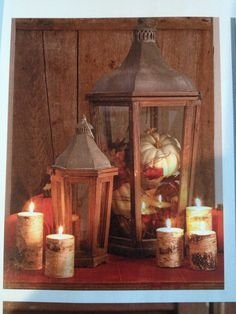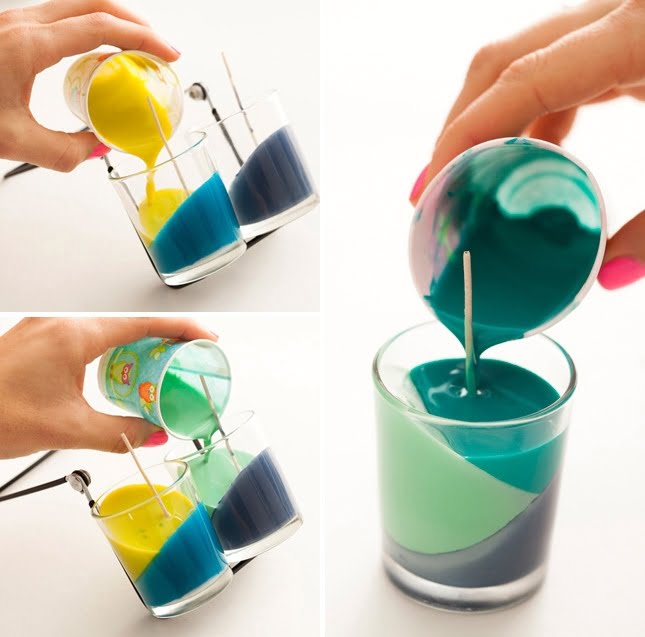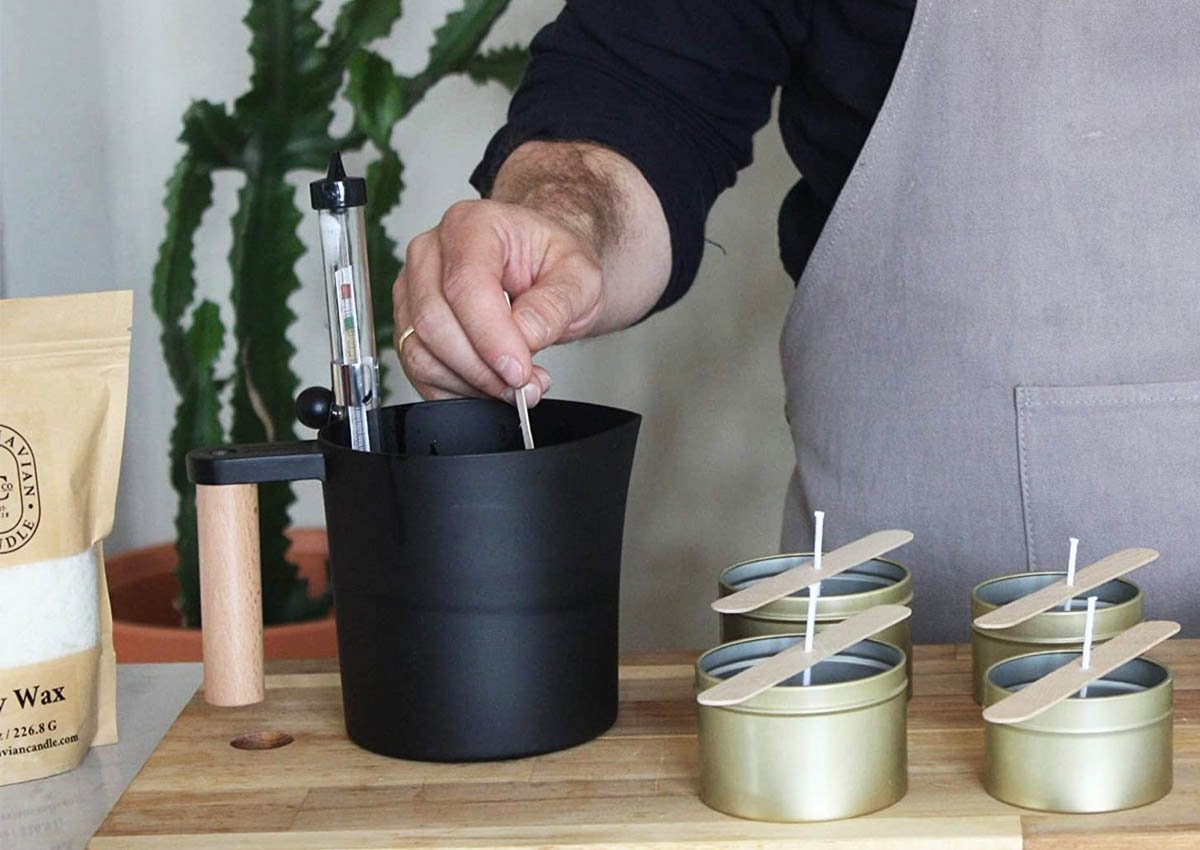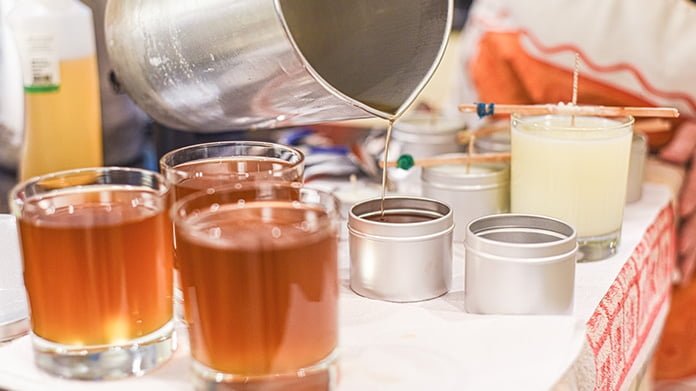The art of candle-making has evolved beyond simple wax and wick, allowing crafters to delve into a world of creativity and personalization. In recent years, a growing trend has emerged – putting things in candles.
From dried flowers and jewelry to photographs and seashells, the possibilities are endless when it comes to incorporating unique elements into your homemade candles. This article delves into the exciting realm of candle-making with added elements, exploring various techniques, supplies, and safety precautions to help you unleash your creativity and create one-of-a-kind candles.
Personalized and unique candles have become increasingly popular, as people seek to infuse their own personality and style into their living spaces or special occasions. By putting things in candles, individuals can express their creativity while also adding personal touches that make each candle truly special. However, it is essential to ensure that the materials used are safe for burning and do not pose any fire hazards.
Before embarking on this creative journey, it is crucial to gather the necessary supplies. While traditional candle-making requires basic ingredients such as wax, wick, and fragrance oils, incorporating additional elements opens up a whole new range of possibilities. Whether you choose dried flowers for an elegant touch or wax melts for vibrant bursts of color and scent, knowing how different materials interact with the candle base is vital.
Stay tuned as we dive deeper into the mesmerizing world of putting things in candles. Discover various techniques for embedding objects in candles, explore how botanicals can add natural beauty to your creations, learn about the sentimental value of embedded keepsakes, and get inspired by unexpected elements you probably never thought of using before. So let’s ignite our creativity together as we unlock the secrets behind making truly extraordinary candles.
Essential Supplies for Making Candles with Added Elements
When it comes to making candles with added elements, having the right supplies is essential. While the basic candle-making ingredients of wax, wick, and fragrance are necessary, there are additional materials that can be incorporated to create unique and personalized candles.
Basic Ingredients for Candle-Making
Before diving into the world of adding elements to candles, it’s important to start with the basics. The main ingredients needed for candle-making include wax, wick, and fragrance. Wax serves as the base for the candle and is available in various types such as paraffin wax, soy wax, or beeswax.
Choosing Additional Materials
To truly explore the creative possibilities of putting things in candles, you’ll need to gather some additional materials. Dried flowers are a popular choice for adding a natural and aesthetic touch to candles. They can be either pressed or whole flowers depending on your desired effect. Wax melts or tarts are another fun addition that can offer different fragrances when melted within a candle.
Jewelry is also an exciting element that can elevate a candle’s appeal. You can embed small rings, necklaces, or earrings within the wax to create a surprise keepsake for someone special. Just ensure that all jewelry pieces are safe for embedding and won’t react negatively with the heat of the candle.
Having these supplies ready will allow you to experiment and create beautifully customized candles with added elements that reflect your personal style and creativity. In the next section, we will explore different techniques for incorporating these elements into your candles.
Exploring the Different Techniques for Incorporating Elements in Candles
Incorporating various elements into candles can elevate them from ordinary to extraordinary. There are several techniques that can be used to add a touch of uniqueness and creativity to your candle-making process. By exploring these techniques, you can create candles that are not only beautiful but also hold sentimental value or surprise the recipient with unexpected delights.
One popular technique for incorporating elements in candles is embedding objects. This involves placing small objects, such as crystals, seashells, or small toys, into the melted wax before it solidifies. The embedded objects become visible as the candle burns down, creating visually stunning effects. To achieve this technique, follow these steps:
- Choose your desired objects: Select items that are heat-resistant and won’t release toxic fumes when exposed to heat.
- Prepare the mold: Place the chosen objects at the bottom of the candle container or mold.
- Pour the melted wax: Slowly pour the melted wax over the embedded objects, making sure they are fully covered but still visible through the transparent wax.
- Insert the wick: Wait for the wax to cool slightly but not fully solidify before inserting the wick into the center of the candle.
- Allow it to set: Let the candle cool and solidify completely before trimming the wick and enjoying your unique creation.
Another technique is layered effects, which involves pouring different colored layers of wax on top of each other to create a visually appealing design within your candle. Here’s how you can achieve this technique:
- Prepare multiple containers of melted wax in different colors.
- Pour a thin layer of one color into your candle container or mold.
- Allow it to cool and solidify partially so that it forms a skin on top.
- Gently score the surface of the partially solidified layer with a toothpick or skewer to create texture for better adhesion with subsequent layers.
- Repeat steps 2-4 with the remaining colors, pouring one layer on top of another and scoring the surface before it solidifies.
- Finish by pouring a final layer of clear wax to encapsulate the layers and provide a smooth finish.
- Insert the wick and allow the candle to cool completely before trimming the wick and enjoying your layered masterpiece.
Lastly, inclusion techniques involve suspending objects or materials within the candle without embedding them directly into the wax. One popular inclusion technique is using heat-resistant jars or containers and filling them with wax melts or scented beads in various colors and shapes. When the candle burns, these melts or beads melt alongside the surrounding wax, releasing their fragrance and creating an enchanting sensory experience.
These are just a few of the many techniques that can be explored when incorporating elements in candles. Each technique allows for endless possibilities to unleash your creativity and create truly unique candles that are both visually stunning and meaningful. So go ahead and experiment with these techniques to add a touch of magic to your candle-making journey.
A World of Scented Surprises
Adding fragrance to candles is a crucial step in creating a truly sensory experience for your creative creations. The right fragrance can enhance the ambiance of any space and evoke specific moods or memories. When incorporating additional elements into your candles, it is important to select compatible scents that complement the added materials and contribute to a harmonious overall candle experience.
There are various fragrance options available for candle-making, allowing you to customize your creations based on personal preferences and desired atmospheres. Some popular fragrance choices include floral scents like lavender or rose, fruity scents like citrus or berry, and cozy scents like vanilla or cinnamon. You can also experiment with unique combinations or explore more unconventional fragrances like woodsy notes or exotic spices.
To add fragrance to your candles, you have several options. One common method is using liquid fragrance oils specifically formulated for candle-making. These oils are highly concentrated and designed to withstand the heat of burning candles without losing their scent. Simply add the desired amount of fragrance oil to your melted wax before pouring it into the container or mold.
Another option is using scented wax melts or tarts as an addition to your candles. These small blocks of scented wax can be melted alongside the regular candle wax and will impart their aroma when the candle is burned. Wax melts come in a wide range of fragrances, making them a versatile choice for adding scent to your candles.
When using fragrance in combination with other elements, it’s important to consider how they will interact with each other. For example, if you’re adding dried flowers to your candles, selecting a floral-scented oil that complements those particular flowers will create a cohesive scent profile. Likewise, if you’re embedding seashells in your candles, opting for an ocean-inspired fragrance will enhance the overall beachy ambiance.
Adding fragrance to your creative creations opens up endless possibilities for customization and sensory delight. Whether you’re crafting botanical candles infused with natural scents or creating themed candles for special occasions, choosing the right fragrance will elevate your candle-making to a whole new level. So go ahead, unleash your creativity and let the power of fragrance transform your candles into scented surprises that delight the senses.
Nature’s Beauty Captured in Wax
The art of candle-making has evolved beyond traditional scents and shapes, with individuals seeking personalized and unique creations. One creative avenue gaining popularity is the incorporation of natural elements into candles, known as botanical candles. By infusing petals, leaves, herbs, and other botanicals into wax, candle enthusiasts can capture the beauty of nature in their creations.
To create botanical candles, it is important to properly dry and preserve the botanicals beforehand. This ensures that they retain their shape and color when embedded in the wax. The drying process may involve air-drying or pressing the flowers and leaves between heavy books for a few weeks. Additionally, it is crucial to choose fresh and vibrant botanicals to achieve the desired visual effect.
When adding botanicals to candles, there are various techniques that can be employed. One common method involves gently pressing the dried botanical between two layers of melted wax in a glass container. This creates a transparent effect with the botanical suspended within the candle. Another technique is to arrange the dried elements on top of a poured layer of wax before adding another layer on top. This results in a layered effect both visually intriguing and fragrant.
It is essential to note that not all botanicals are suitable for candle-making. Some may release harmful chemicals or have flammable properties when exposed to heat. It is recommended to research each specific type of plant material before use and ensure they are safe for inclusion in candles. By following these guidelines, candle-makers can unlock a new level of creativity by harnessing nature’s beauty through the art of botanical candles.
| BENEFITS OF BOTANICAL CANDLES | SAFETY PRECAUTIONS |
|---|---|
| – Captures natural beauty | – Research each plant material for safety |
| – Creates visually intriguing candles | – Ensure botanicals are heat-resistant |
| – Adds fragrance and aroma | – Avoid flammable botanicals |
| – Personalized and unique creations | – Check local regulations on plant material use |
Unveiling the Hidden Treasures
Creating candles with embedded keepsakes adds a touch of sentimentality and personalization to the candle-making experience. By embedding special items like photos, rings, or small trinkets in candles, you can create unique and cherished pieces that hold significant meaning. In this section, we will discuss the sentimental value of embedded keepsakes, offer guidance on choosing and preparing items for embedding, and ensure the safety of the process.
The Sentimental Value of Embedded Keepsakes
Embedding personal keepsakes in candles allows you to capture memories and create meaningful gifts or decor pieces. Whether it’s a photo of a loved one, a symbolic piece of jewelry, or a small trinket with sentimental value, these embedded keepsakes hold significance and evoke emotions for both the creator and recipient. The act of gifting someone a candle that houses a cherished item can be incredibly touching and memorable.
When selecting keepsakes for embedding in candles, consider their size and material to ensure they are suitable for the process. Small objects such as rings or charms work well as they won’t weigh down the candle or affect its burning. Avoid using large or heavy items that may disrupt the candle’s structure or pose safety hazards when lit.
Guidance on Choosing and Preparing Items for Embedding
Before embedding an item in a candle, it is essential to prepare it properly to ensure both its longevity and safety within the candle. Here are some steps to follow:
- Cleanliness: Ensure that the item is clean before embedding it in wax. This will prevent any dirt or residue from affecting the appearance or scent of the candle.
- Heat Resistance: Confirm that the item can withstand the heat generated by burning candles without melting or releasing harmful substances into the air.
- Positioning: Decide on where you want to place the embedded item within the candle. Consider its size and weight to determine if it needs support or specific placement to maintain balance.
- Encasing: For added protection and longevity, consider encasing delicate or sentimental items like photos in a clear resin or wax coating before embedding them in the candle.
By following these steps, you can ensure that your embedded keepsakes are well-preserved and safely incorporated into your candles.
Safety Precautions
When embedding keepsakes in candles, safety should be a top priority. Here are some precautions to keep in mind:
- Flammability: Ensure that the embedded item is non-flammable and won’t ignite when exposed to flames. Avoid using materials such as paper or highly flammable substances.
- Heat Resistance: Verify that the item you embed can withstand the heat generated by burning candles without causing any danger or releasing harmful fumes.
- Candle Placement: When displaying or burning candles with embedded keepsakes, always place them on heat-resistant surfaces away from flammable materials and out of reach of children or pets.
- Lighting Instructions: Provide clear instructions to recipients on how to safely burn the candle without causing harm to themselves or damaging the embedded item.
By considering safety precautions and choosing suitable materials for embedding, you can create beautiful and cherished candles with embedded keepsakes that will be enjoyed for years to come.
Unexpected Delights
Incorporating surprising elements in candles is a creative way to add a touch of uniqueness and visual appeal to your candle-making projects. By thinking outside the box and experimenting with unconventional materials, you can create visually stunning candles that make for eye-catching decor or thoughtful gifts. In this section, we will explore some unexpected ideas for incorporating surprising elements in candles and discuss the safety precautions necessary when using these materials.
One exciting idea to consider is adding glitter to your candles. Glitter can instantly transform an ordinary candle into a dazzling display of shimmering lights. To incorporate glitter, simply melt your wax as usual and then mix in the desired amount of glitter while the wax is still hot.
Stir well to ensure even distribution of the glitter throughout the melted wax. Pour the mixture into your candle container or mold and allow it to cool and solidify completely. The end result will be a mesmerizing candle that sparkles beautifully when lit.
Another delightful element to include in your candles is seashells. Seashells add a whimsical and beachy vibe to any candle, making them perfect for coastal-inspired home decor or beach-themed events. To incorporate seashells, begin by selecting shells of various shapes and sizes.
Clean them thoroughly and arrange them inside your candle container before pouring in the melted wax. Make sure that the shells are positioned in a way that allows for complete coverage with wax, preventing any exposed areas from interfering with burning. Once the wax has cooled and hardened, trimming down the wick may be necessary if it runs through or near the shells.
It’s important to note that when incorporating surprising elements like glitter or seashells into candles, safety precautions should always be taken into consideration. Make sure that you are using non-flammable materials that can withstand exposure to heat without releasing toxic fumes or causing fire hazards. Additionally, remember that certain additives like glitter may reduce burn time due to their combustible nature, so it’s crucial to test your candles and monitor them closely when burning.
To summarize, incorporating surprising elements in candles opens up a world of creative possibilities. Whether you choose to add glitter for an enchanting sparkle or seashells for a coastal touch, these unexpected materials can enhance the visual appeal and charm of your candle creations.
Just remember to prioritize safety by selecting non-flammable and heat-resistant materials, testing your candles thoroughly, and practicing caution while burning them. With these precautions in mind, it’s time to unleash your creativity and have fun making unique and visually stunning candles.
Candle-Making for Special Occasions
Candle-making is not only a creative and therapeutic activity but also a fantastic opportunity to create personalized gifts for special occasions. Whether it’s a baby shower, wedding, or birthday, customized candles can add an extra touch of thoughtfulness and sentimentality to your gift-giving. In this section, we will explore some unique gifting ideas and provide step-by-step instructions for DIY projects using candles.
One fun idea is to create themed candles that align with the recipient’s interests or hobbies. For example, if you’re attending a baby shower, consider making baby-themed candles in the shape of cute animals or incorporating mini pacifiers as embedded keepsakes. Similarly, for weddings, you can design elegant candles adorned with delicate lace or dried flowers that match the bride’s bouquet.
To make themed candles, start by gathering the necessary supplies such as wax, wicks, fragrance oils (if desired), and any additional materials that align with your theme. Choose molds that reflect the shape or design you have in mind – silicone molds offer great flexibility in creating custom shapes. Follow the basic candle-making process by melting the wax, adding fragrance if desired, pouring into the mold around the wick, and allowing it to cool and solidify.
Once you have your base candle ready, it’s time to add embellishments. For a baby-themed candle example mentioned earlier, attach miniature pacifiers using adhesive specifically designed for candle-making. You can also paint the candle with non-toxic acrylic paints or decorate it with ribbons or stickers related to the occasion. The key is to let your creativity flow and personalize each candle according to your recipient’s taste.
By gifting customized candles made with love and care, you are giving more than just a regular item – you are sharing a piece of yourself through your creative expression. The effort put into making these candles will surely be appreciated, and the recipient will have a unique keepsake to cherish. So, let your imagination shine and enjoy the process of creating meaningful gifts through candle-making.
Safety Concerns and Precautions When Putting Things in Candle
While creating personalized and unique candles by putting things in them can be an exciting and creative endeavor, it is essential to prioritize safety throughout the candle-making process. Before diving into the world of embedding objects or adding surprising elements to your candles, it is crucial to understand the safety concerns and take the necessary precautions.
First and foremost, it is vital to use non-flammable and heat-resistant materials when deciding what to put in a candle. This ensures that the embedded items or added elements do not catch fire or pose a risk while the candle is burning. Avoid using materials like paper, fabric, or any highly flammable items that could cause accidents.
Furthermore, it is crucial to consider the size and weight of the objects you plan on embedding in your candles. Larger or heavier objects may sink unevenly within the wax, leading to an imbalanced burn or potential hazards. Additionally, if you are embedding keepsakes, such as jewelry or sentimental items, make sure they are thoroughly cleaned and free from any flammable substances before inserting them into the candle.
When placing objects in a candle, it’s important to ensure they are situated securely within the wax. Loose or poorly secured items can dislodge during burning, causing a fire hazard or releasing toxic fumes. Utilize appropriate tools like tweezers or pronged sticks to position your chosen items carefully at a suitable depth within the candle.
Lastly, never leave a burning candle unattended when you have added elements or embedded objects in it. The presence of foreign materials inside the wax can impact how evenly the candle burns and may increase the risk of accidents. Always follow standard safety practices for burning candles, such as keeping them away from flammable materials and out of reach of children and pets.
By being mindful of these safety concerns and taking necessary precautions, you can enjoy creating beautiful candles with embedded keepsakes or surprising elements without compromising on safety. Remember, safety should always be a priority, ensuring that your candle-making experience remains both enjoyable and risk-free.
Conclusion
In conclusion, the art of putting things in candles opens up a world of creative possibilities for candle-makers. Throughout this article, we have explored the different techniques and ideas that can be used to personalize and enhance candles, from embedding keepsakes to infusing natural botanicals. By incorporating various elements into their creations, individuals can create unique and meaningful candles that not only serve as sources of light but also as expressions of their creativity and personality.
Safety is of utmost importance when it comes to putting things in candles. It is crucial to use non-flammable and heat-resistant materials for embedding in order to prevent potential hazards. Following safety guidelines and precautions will ensure that the candle-making process remains enjoyable while keeping everyone involved protected.
Now that you are equipped with the knowledge and inspiration from this article, I encourage you to unleash your creativity and embark on your own candle-making journey. Whether you are gifting personalized candles for special occasions or creating one-of-a-kind pieces for yourself, the possibilities are endless. Let your imagination run wild as you experiment with different techniques and incorporate surprising elements into your candle designs.
Remember, candle-making is not just about creating a functional item; it is an art form that allows you to express yourself. So gather your supplies, gather your ideas, and let the magic happen as you put things in candles when making.
Frequently Asked Questions
What can you not put in candles?
When it comes to what you can’t put in candles, there are a few important restrictions to be aware of. First and foremost, you should never put any kind of flammable or combustible material inside a candle. This includes items such as paper, fabric, or any other objects that can easily catch fire.
It is also essential to avoid putting any metals or metallic items inside candles as they can cause serious safety hazards like sparks or explosions. Additionally, it is not recommended to put any perishable items in candles as they can decay and spoil, affecting the quality and safety of the candle.
How do you put things inside a candle?
Putting things inside a candle requires careful consideration and adherence to certain techniques. The most common method involves using embeds, which are small decorations or objects that are placed inside the candle while it is still hot and malleable. To create an embedded design, one must first select suitable non-flammable objects like dried flowers, gemstones, beads, or shells.
Then, you gently press these items into the softened wax near the surface of the candle. As the wax cools and solidifies, it securely holds the embeds in place within the candle’s structure.
Can you put toys in candles?
While it is technically possible to put toys inside candles under specific circumstances, caution must be exercised due to potential safety concerns. Generally speaking, larger toys should not be placed directly inside a candle since they may not burn evenly with the surrounding wax and could create fire hazards when exposed.
However, for decorative purposes or novelty candles specifically designed for this purpose, smaller toys could be safely embedded within the exterior layer of wax during manufacturing. These types of novelty candles often fuse entertainment with functionality by revealing small trinkets or figures as they burn down layer by layer.

Welcome to my candle making blog! In this blog, I will be sharing my tips and tricks for making candles. I will also be sharing some of my favorite recipes.





